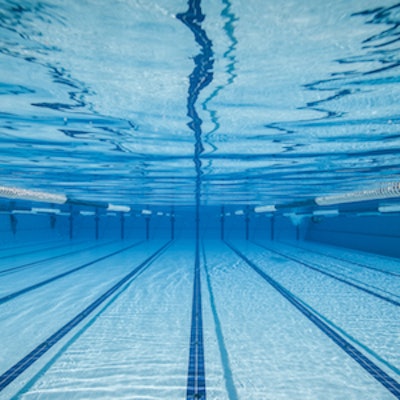
When measuring the volume of a pool, it's common to turn to calculations based on square footage and depth. That's a perfectly fine method...for pools that are traditionally shaped. However, when you encounter a pool that falls outside of the normal array of pool shapes, you can turn to a chemical method to measure volume.
All you need is an alkalinity test kit, sodium bicarbonate or muriatic acid, and the formula. In short, this method involves adding a specific amount of acid or bicarb to the water, observing the results and plugging the chemical dosage and result into a formula so you can calculate the gallons of water in the pool.
Here is the method in more detail:
1. Take a water sample from the pool, test and determine the total alkalinity. For best results, it is important to use a test method that is accurate to within 1 or 2 ppm. However, most test kits have each drop of titrant equal 10 ppm. To account for this, add 10 times the amount of pool water as the normal test sample amount into a small cup. Then each drop of titrant becomes 1 ppm instead of 10 ppm. If the alkalinity is on the low side and could be raised, use sodium bicarbonate to raise the alkalinity.
2. For pools between 15,000 and 30,000 gallons, add precisely 5 pounds of sodium bicarbonate. For larger pools, add 10 pounds.
3. With the circulation system running and after brushing for proper dilution, wait for the chemical to completely blend throughout the water. It should take about 45 minutes for most residential pools.
4. Then take a second water sample from the pool and test the alkalinity again using the same 10 times of pool water volume.
5. Apply the formula in Fig. 1.
RELATED: Easy Pool/Spa Chemical Formulas
Of course, if lowering a high alkalinity, be careful to not add too much acid at one time. Generally, it is safe to add two quarts of acid per 20,000 gallons of pool water when the TA is 120 ppm or higher, and the pH is 7.8 or above. Two quarts of acid will lower the TA by 12.5 ppm per 20,000 gallons.
The accuracy of this method is dependent on the accuracy of the chemical dose and the alkalinity test method. You will notice that using 10 times more test water sample means that if the alkalinity level is 100, it will use 100 drops of titrant. That may seem a lot, but you get the needed accuracy.
Do not go overboard on either volume or dosage precision. Since a one-inch change in a pool's water level can result in hundreds of gallons of water volume difference, round off the calculated volume to the nearest 1,000 and call it good.
The method of acid dosing does not affect the amount that the alkalinity changes, so it is not necessary to worry about "columns" or "slugs" or any other methods of adding liquid pool acid. However, it is best to dilute the acid and trickle it around the pool or over the return lines when the pool equipment system is on. What is an issue is that the acid or base added is allowed to fully blend throughout the pool before the second sample is tested.
 Click to enlarge
Click to enlarge











































